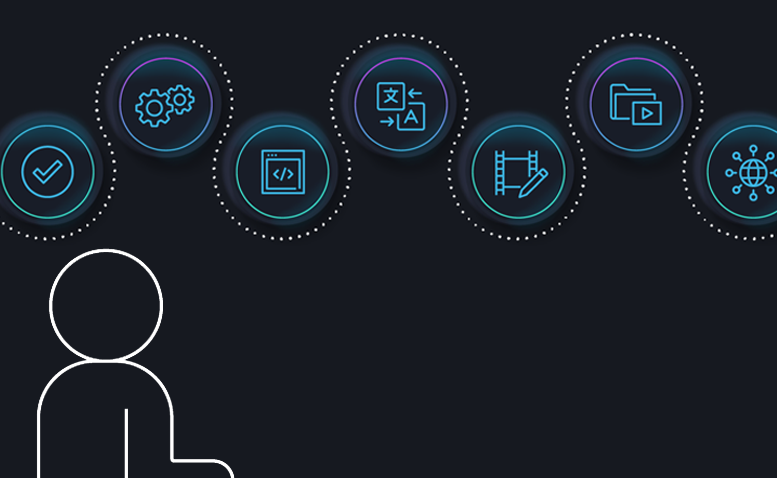Concern over the environmental impact of industry is not just becoming more commonplace – its becoming more “structural”. What do I mean by that? While regulations are being developed — particularly in Europe and select regions of the U.S. — that aim to curb carbon emissions and reduce waste, we likewise see businesses proactively integrating sustainability considerations into their corporate missions and their business plans.
As organizations seek to deliver on their sustainability goals, the carbon footprint of our tech stacks are under scrutiny. Many RFPs now include a requirement that vendors account for the impact of our products. SDVI can confidently respond that our cloud-based media supply chains deliver real sustainability gains, with energy consumption data that allows organizations to credibly report on their environmental impact.
So what makes cloud-based media supply chains so effective?
Enabling Efficient Resource Usage
Cloud-based platforms help to eliminate idle machines on-premises and remove the costs associated with powering, cooling and maintenance of those unused systems. More efficient usage of compute resources and infrastructure translates to greener operations, with meaningful cost savings. While cloud environments inherently promote resource sharing, ensuring that infrastructure is always in use, media organizations running media supply chains in the cloud only pay (and pollute) according to their actual usage. This approach benefits all organizations, regardless of their stance on environmental issues, as it ultimately saves them money while reducing their carbon footprint.
Additionally, public cloud providers such as AWS and Google are investing heavily in their own green energy initiatives. Data centers which run cloud-based media supply chains are operating cleaner over time, utilizing solar, wind, and geothermal power sources. This only enhances the sustainability of the operations they support.
Doing More With Less
A second key sustainability benefit of cloud-based media supply chains is the ability to do more with less. The model itself enables optimization that makes organizations more efficient, and therefore more sustainable. For example, the SDVI Rally media supply chain management platform dynamically provisions the infrastructure and tools required for specific tasks only when they are needed, eliminating the inefficiencies and costs of maintaining underutilized resources. The platform automates key processes, such as content receipt, validation, and metadata extraction, optimizing manual intervention and minimizing errors. By offering on-demand access to a wide range of application services, Rally allows organizations to scale their operations flexibly and cost-effectively, without the need for permanent infrastructure or complex systems integration.

SDVI is continually making the Rally platform itself more resource-efficient, in turn driving greater sustainability for users. To support media organizations in assessing and reducing their carbon footprint, SDVI consistently shares data on cloud resource usage for media supply chain operations and processing. This reporting is a critical part of the SDVI Net-Zero Media Supply Chains initiative.
Verifiably Net-Zero Today
 SDVI’s Net-Zero Media Supply Chains initiative makes all operations associated with the Rally media supply chain management platform completely carbon neutral. Starting in 2021, this initiative has offset the carbon footprint of all Rally platform usage, including all the third-party applications run on it. Offsets are certified by the Gold Standard Foundation, effectively mitigating environmental impact of working with the Rally platform.
SDVI’s Net-Zero Media Supply Chains initiative makes all operations associated with the Rally media supply chain management platform completely carbon neutral. Starting in 2021, this initiative has offset the carbon footprint of all Rally platform usage, including all the third-party applications run on it. Offsets are certified by the Gold Standard Foundation, effectively mitigating environmental impact of working with the Rally platform.
SDVI provides regular reporting to Rally users, and the corresponding offsets. This transparency helps to make Rally users’ sustainability efforts both real and measurable. In addition to providing customers with annual reports detailing their supply chain’s carbon footprint, SDVI is expanding its own carbon offset efforts to cover all its own business operations, detailing Scope 1, 2, and 3 emissions, as defined by the GHG Protocol Corporate Standard.
Committing to a Sustainable Future
As the industry continues to evolve, the need for established best practices in sustainability reporting and auditing grows. Clear, consistent guidelines will help companies accurately measure and report their environmental impact, enabling greater accountability and providing a solid foundation for future improvements. By embracing a more standardized approach and by reporting and sharing data, media organizations can improve operational efficiency and lower costs while making real progress toward reducing the global carbon footprint.
—
Want to learn more about how the Rally platform can contribute to an organization’s sustainability goals? Let’s start the conversation.



